2. American religious belief and behavior have declined alongside religious identification, as Gallup has consistently shown, so Americans are not simply becoming less fond of Christian organizations. Americans are increasingly abandoning religion entirely.
Americans, as Gallup has shown, increasingly see religion as “
largely old-fashioned and out of date,”:
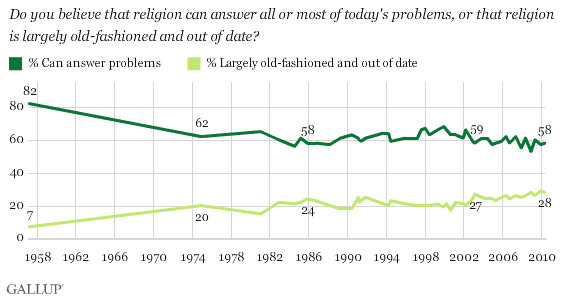
Yet some Christians are not worried about the their way of life waning. American Vice President Mike Pence
claimed that "Religion in America isn’t receding – just the opposite," because
supposedly the "percentage of Americans who live out their religion on a weekly basis – by praying, going to church, and reading and believing in the Bible – has remained remarkably consistent over the decades." Pence's beliefs about American religious demographics are almost as inaccurate as his religious beliefs. While Gallup lacks long-term year-over-year data on prayer and scripture-reading frequency, what they do have shows the
decline of American religious behavior over the last few decades. According to Gallup, the proportion of Americans who...
- ..."attend church or synagogue ... never" almost doubled from 14% in 1992 to 27% in 2017, while the proportion who attended "every week" declined from 34% in 1992 to 23% in 2017.
- ..."attend[ed] church or synagogue in the last seven days" declined from 40% in 1992 to 35% in 2017.
- ...believe that "the Bible is the actual word of God and is to be taken literally, word for word" declined from 38% in 1976 to 24% in 2017.
- ...believe that "the Bible is an ancient book of fables, legends, history, and moral precepts recorded by man" doubled from 13% in 1976 to 26% in 2017.
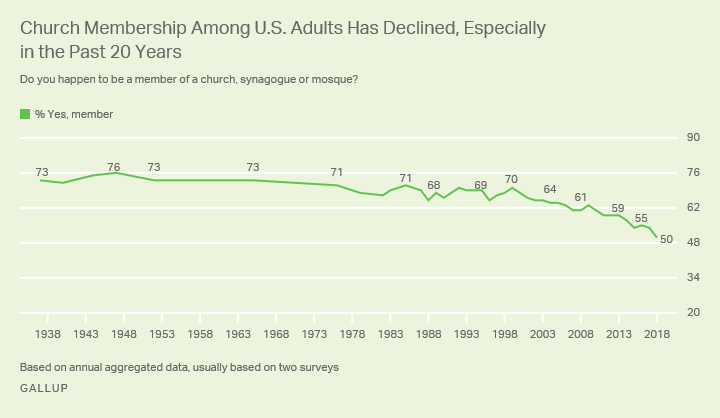
Some have alleged that the decline in religious behavior and identification does not mean a decline in religious belief. While discussing his book
Bad Religion on
Real Time with Bill Maher, Ross Douthat of the
New York Times contested the claim that American religious belief is declining by presenting what he considered a nuanced view of the demographic shifts in religion. He acknowledged that "organized religion [is] weaker than ever before," but also claimed that "Americans are still as religious as ever" because "more people claim a direct experience of the divine than they did in the 1950s, people are still as likely to say they believe in God, and so on. If you drop below 'Do you go to church on Sunday?' and ask 'What do people actually believe?' [then] religion's as potent as ever."
[5]Note 5. Bill Maher, Real Time with Bill Maher Season 10 Episode 13 (2012, April 20). It used to be on YouTube, but after that video was taken down, I have not been able to find the episode in full. I have found summaries of it on iMDB, Maher's blog, and Metacritic. Douthat's first example is surprisingly correct, because the
proportion of Americans reporting a religious/mystical experience has doubled since 1962, but his second example is demonstrably false.
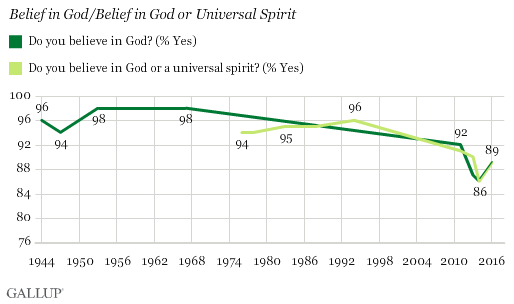
Gallup found that
American belief in God has declined since the late 1960s. It has not declined as quickly or consistently as Christian identification, or as quickly as nonreligious identification has risen, but in every metric it has declined nonetheless. Not only do a smaller percentage of Americans believe in God now than ever, but fewer believers in God are convinced that God exists:
[6]Note 6. Confirming Gallup's findings, Pew's Religious Landscape Study also found a slight decline of American belief in God from 92% in 2007 to 89% in 2014. The decline of "[b]eliev[ing] in God with absolute certainty" over the same period was even faster, from 71% to 63%.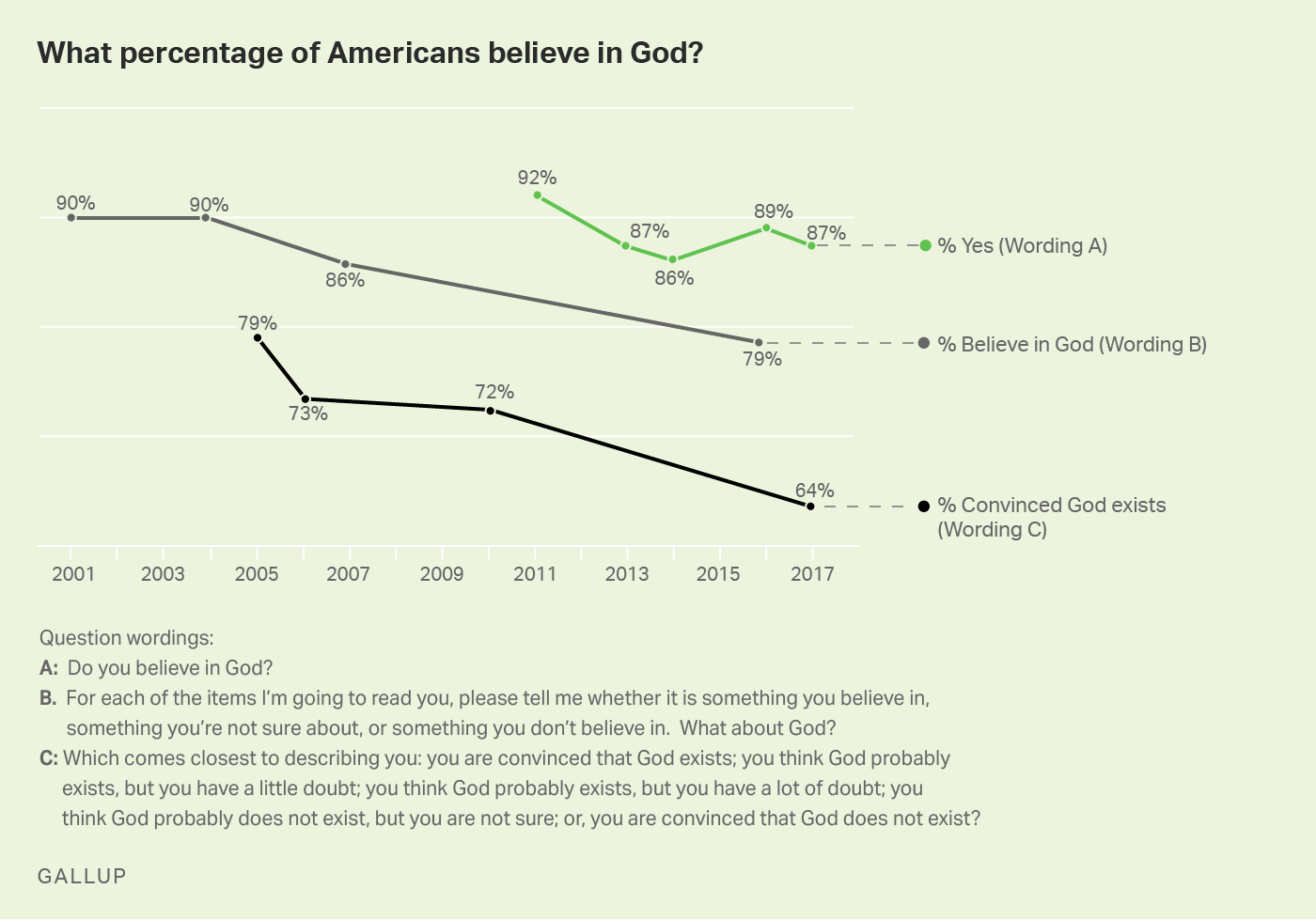
In 1967, 1% of Americans told Gallup that they do not believe in God. In 2017,
12% of Americans told Gallup they do not believe in God, the highest known percentage in American history.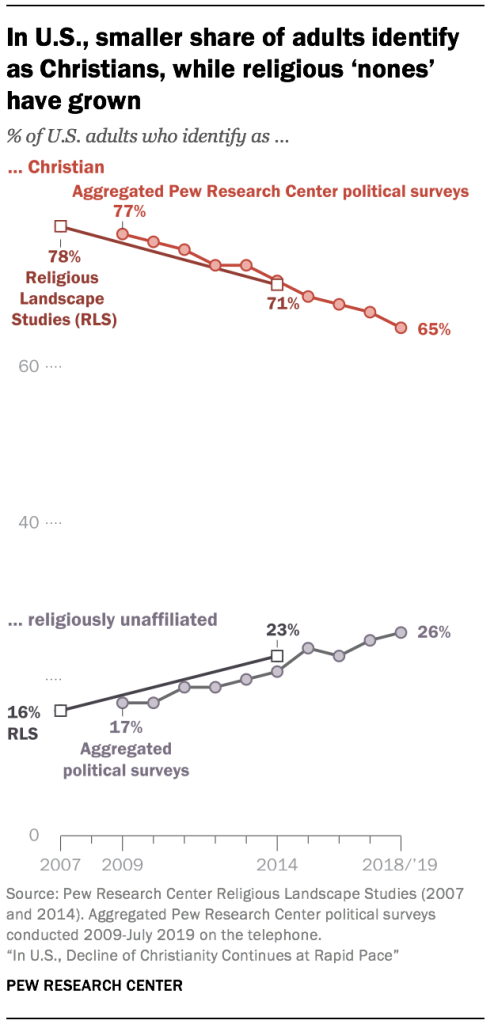
 Contrast an old Pew report which found that
Contrast an old Pew report which found that 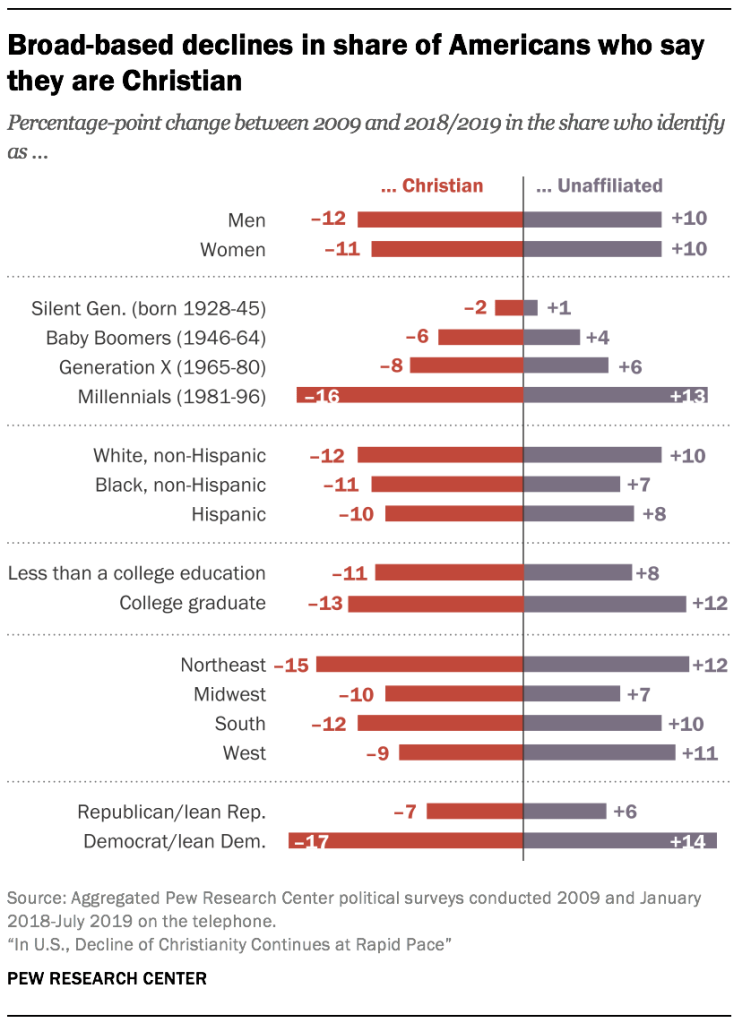




 Gallup found that
Gallup found that  In 1967, 1% of Americans told Gallup that they do not believe in God. In 2017,
In 1967, 1% of Americans told Gallup that they do not believe in God. In 2017,